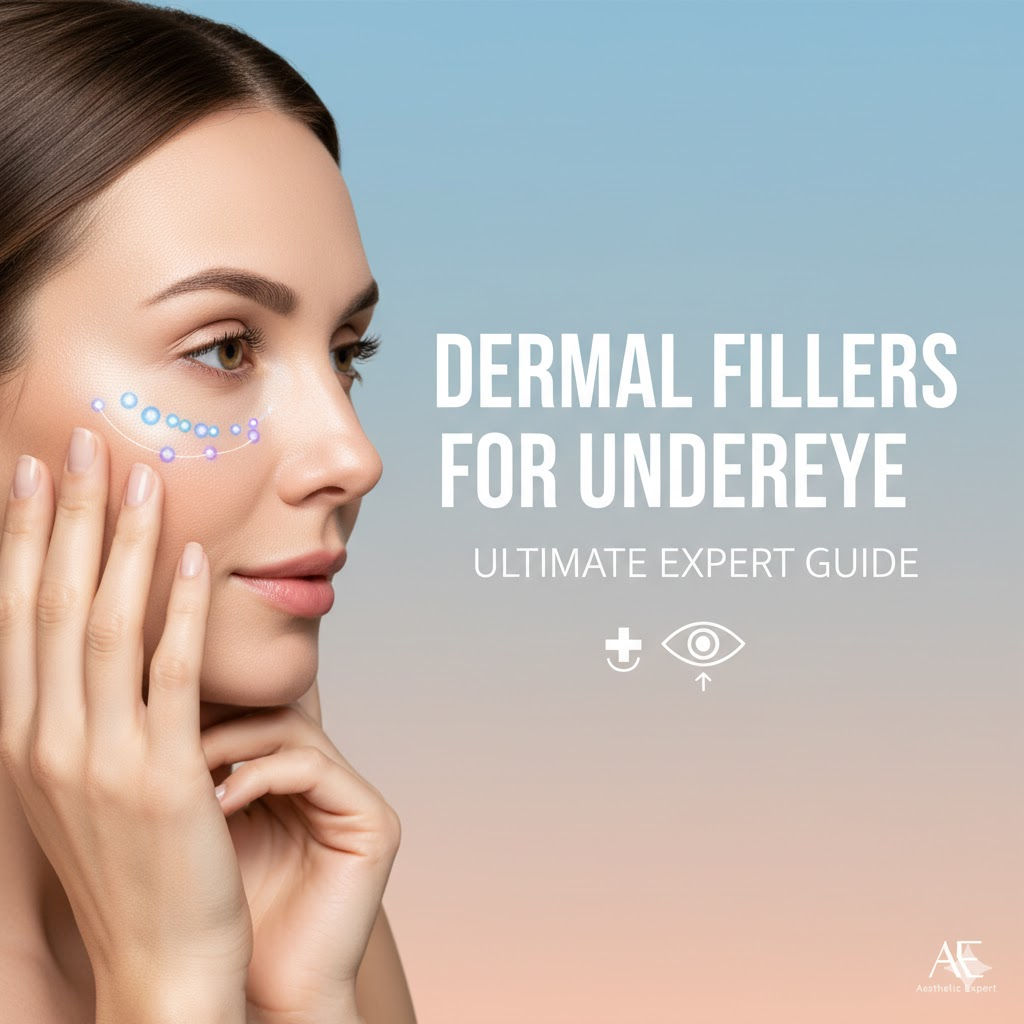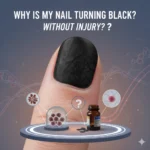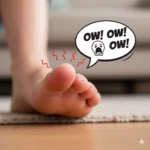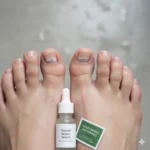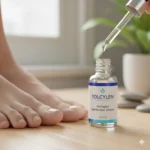Why Dermal Fillers for Undereye Appearance Shapes
Dermal Fillers for Undereye Have you looked in the mirror and seen dark circles under your eyes? Do you feel tired even after sleeping? Honest, it hits deeper than vanity. The undereye area isn’t about looks. It’s a subtle map of age, stress, sleep, and lifestyle. And here’s the thing, those tiny shadows can make a person look older, sadder, or even ill.
Dermal fillers have emerged as the go-to solution for those hollows. Not a miracle, not overnight perfection, but a tool. A way to restore youthfulness subt. And people notice, not exactly how. It’s a quiet confidence boost.
In this article, we’ll dive deep. Anatomy, procedure, risks, benefits, stories, and future trends. By the end, you will know all about fillers.under your eyes.
What Are Dermal Fillers for Undereye?
Dermal fillers are injectable gels. Most hyaluronic acid (HA), a substance natural found in our skin. They work by adding volume, smoothing wrinkles, and improving contour. In the undereye region, they fill hollows and soften shadows.
Types of Dermal Fillers for Undereye
Filler TypeDurationBest UseNotesHyaluronic Acid (HA)6-18 monthsUndereye, lips, cheeksReversible, moldable, softCalcium Hydroxylapatite12-18 monthsDeep wrinkles, cheeksNot ideal for under eyesPoly-L-lactic Acid2+ yearsFacial volumeStimulates collagen slowlyPMMA (Polymethylmethacrylate)PermanentDeep wrinklesRare under eyes, risky
Pro tip: Thin HA fillers like Belotero Balance or Restylane-L are good for under the eyes. Thick ones can make lumps or look strange.
Why Dermal Fillers for Undereye Are Popular
Picture this: you wake up, get ready, put on your favorite outfit, but your eyes betray you. Shadows, hollows. You look tired, even when you’re not. Fillers solve that.
Benefits include:
-
Restoring lost volume
-
Softening shadows
-
Improving under-eye contour
-
Subtle, natural appearance
And again, people notice a difference but can’t say what. That’s the magic. You look refreshed, awake, and alive.
Understanding the Anatomy
The under-eye area is tricky. Thin skin, delicate muscles, fat pads, blood vessels, lymphatic channels. Inject the wrong spot, and you risk bruising, swelling, lumps, or worse. Knowledge is everything.
Dr. Nima Taleb, a skin doctor, says, Filling under the eyes is both art and science. You must know the top and deep fat to be safe.
Tear Trough Anatomy
-
Orbicularis oculi muscle: wraps around the eye
-
Orbital and suborbital fat pads: cushioning, give volume
-
Ligaments: tethering structures, affect shadows
-
Skin: thin, delicate, prone to showing imperfections
Understanding this anatomy helps determine filler type, injection depth, and technique.
The Procedure: Step-by-Step
So, what real happens in the clinic?
-
Consultation: Discuss goals, history, allergies, expectations.
-
Assessment: Examine tear trough depth, skin thickness, vascularity.
-
Preparation: Cleanse area, sometimes apply topical anesthetic.
-
Injection: Microcannulas or fine needles used to place filler precise.
-
Molding: Gentle massage to distribute filler smooth.
-
Post-Care: Avoid rubbing, heavy exercise, or extreme heat for 24-48 hours.
Duration: 20-40 minutes. Immediate results. Subtle but noticeable.
Benefits
-
Immediate results: You see volume restored right away.
-
Non-surgical: No cuts, stitches, or lengthy downtime.
-
Customizable: Tailored to individual anatomy.
-
Flexible: Temporary, allows adjustments over time.
-
Boosts confidence: People notice a change, not exactly what.
Risks & Considerations
Not sugarcoating it. Risks exist:
-
Bruising, swelling
-
Tyndall effect (bluish tint if injected superficial)
-
Lumps or asymmetry
-
Rare: vascular occlusion, vision issues
Key takeaway: Only trust board-certified, experienced injectors.
Choosing the Right Filler
Not all fillers are makes equal. For under eyes:
-
Low-viscosity HA preferred
-
Avoid permanent fillers
-
Ensure hyaluronidase is available in case of issues
Who Is a Good Candidate?
-
Tear trough hollows causing shadows
-
Good skin elasticity
-
No severe allergies
-
Realistic expectations
Not ideal:
-
Severe skin laxity
-
Health conditions affecting healing
-
Expecting permanent perfection
Cost Considerations
-
$600–$1,500 per syringe in the US (2025)
-
Typical 1–2 syringes per session
-
Insurance usually does not cover cosmetic fillers
-
Cheaper doesn’t mean safer
Longevity & Maintenance
-
Results: 6–18 months depending on filler and metabolism
-
Touch-ups: recommended every 12 months
-
Factors affecting longevity: smoking, sun exposure, skin quality, metabolism
Alternatives to Fillers
-
Topical creams: Hydration, limited results
-
Laser resurfacing: Skin texture, pigmentation
-
Fat grafting: Surgical, longer-lasting
-
PRP (platelet-rich plasma): Collagen stimulation
Combining treatments often yields the best outcome.
Case Studies
Case 1: Sarah, 32 One syringe of Belotero Balance under each eye. Softened hollows. Minimal bruising. Immediate confidence boost.
Case 2: James, 45 Desired subtle improvement. Hyaluronic acid injection. Careful placement. Natural result, undetectable filler.
Checklist for Choosing an Injector
-
Board-certified (dermatology/plastic surgery)
-
Experienced in undereye injections
-
Portfolio of before/after photos
-
Comfortable consultation
-
Available for aftercare
Common Mistakes & How to Avoid
-
Overfilling – looks unnatural
-
Wrong filler type
-
Skipping consultation
-
Ignoring anatomy
Rule of thumb: Less is more under eyes.
Future Trends
-
Next-gen HA fillers: longer-lasting, softer
-
Combination treatments: filler + PRP + laser
-
AI-guided injections: mapping vasculature
-
Personalized fillers: viscosity based on skin thickness
FAQs
1. Does it hurt? Mild discomfort; numbing cream helps. 2. When are results visible? Immediate, full effect in 1–2 weeks. 3. Can fillers fix dark circles completely? Only shadows, not pigmentation. 4. Are fillers safe? Yes, if injector skilled; rare complications. 5. Can I wear makeup after? Usually after 24 hours. 6. How often are touch-ups needed? 6–18 months. 7. Are fillers suitable for men? Absolute. 8. Needle vs cannula? Cannula blunt, less bruising; needle precise, more risk. 9. Can filler migrate? Rare with proper technique. 10. Are permanent fillers recommended? No, risky. 11. How much does it cost? $600–$1,500 per syringe. 12. Post-procedure precautions? Avoid rubbing, heavy exercise, heat for 24-48 hours.
Conclusion
Undereye dermal fillers are more than cosmetic tweaks. They restore confidence. They refresh your look. But they demand respect. Knowledge, skill, patience. Choose wise. Results can be subtle but life-changing.

